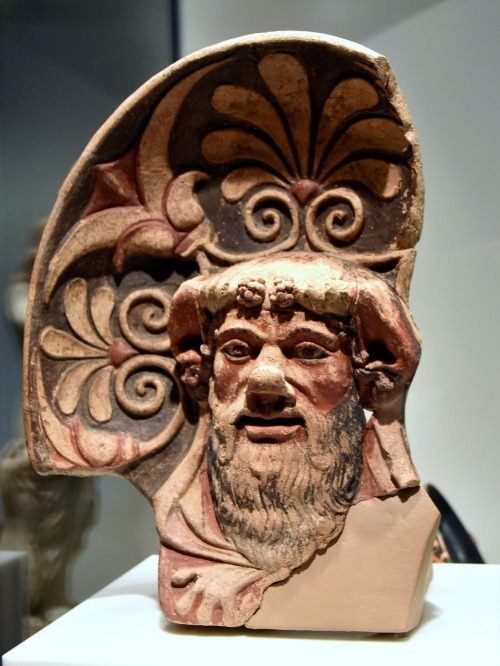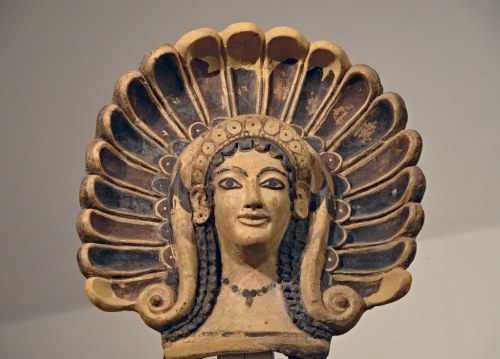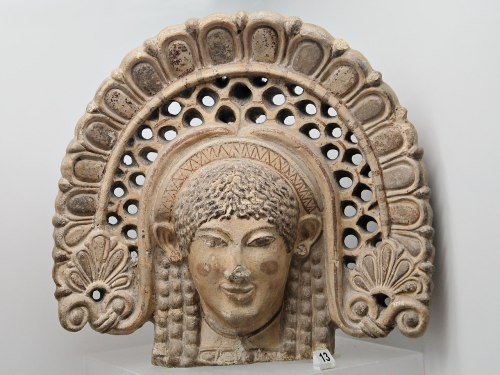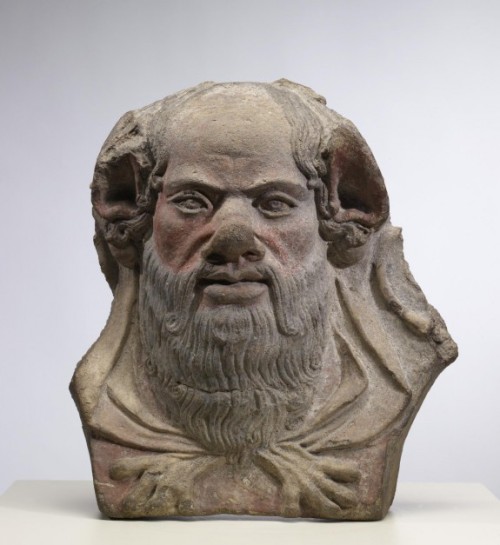classicalmonuments: Painted Etruscan Antefixes - part I An antefix (from Latin antefigere, to fasten
classicalmonuments:Painted Etruscan Antefixes - part IAn antefix (from Latin antefigere, to fasten before) is a vertical block which terminates and conceals the covering tiles of a tiled roof. It also serves to protect the join from the elements. During the Archaic period, antefixes were produced in great numbers throughout Etruria, especially in Caere, southern Etruria (modern-day Cerveteri). Accordingly, many examples have survived. These painted terracotta objects were commonly used on the eaves of a roof, in order to protect the end tiles from the elements. They also formed part of the architectural decoration of buildings and were believed to banish bad luck.Antefix with a head of Silenus and anthemia nimbus / Cerveteri, Lazio, Italy / 4th century BCE Antefix with a Maenad head / Portonaccio Temple at Veii, Italy / 510 BCEAntefix with the head of Silenus / Cerveteri, Italy / 480 BCE Antefix with female head with nimbus / Lanuvium, late-Archic temple of Juno Sospita / 5th century BCEAntefix with the head of Silenus / Italy / 4th century BCESources: 1, 2, 3, 4, 5 -- source link
Tumblr Blog : classicalmonuments.tumblr.com
#etruscan




